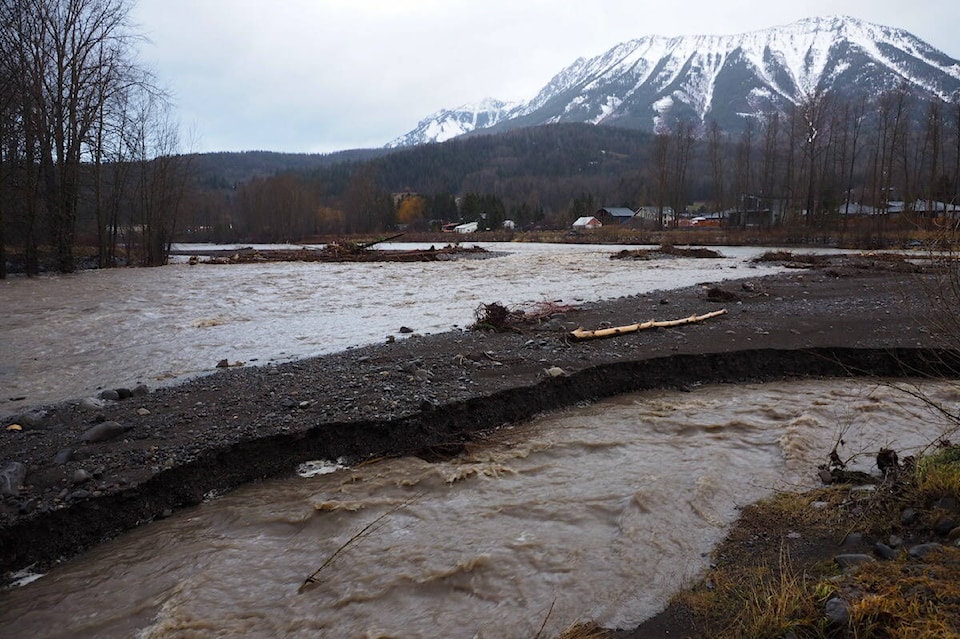Coal Creek has been at it again, chewing away at its banks and depositing more rocks and silt downstream where it connects with the Elk River.
On Wednesday, Dec. 1, during the third ‘atmospheric river’ to bring high rainfall to the province, the creek was not quite as ferocious as it was on Nov. 14-15, but it was still busy working away to bring more of Coal Creek Rd downstream.
Chad Hughes of the Elk River Alliance (ERA), said that Coal Creeks propensity for carrying silt from up the valley came down to land use, of which logging was a part, but not completely to blame.
“If you wanted to boil it down to one factor, it would be that there’s a lot of roads that run right next to watercourse, and roads don’t have trees.
“Without tree roots holding the ground together, the minute water hits it, it gets ripped out and away. What we’re seeing with Coal Creek is mostly roads, roadbeds and stream banks being eroded out.”
Not to mention the historical uses of the area, today the Coal Creek watershed remains a heavily used area for recreation and industry, making the roads numerous and well-travelled.
“That means that all the cleared areas (such as roads and staging areas) are staying cleared,” said Hughes.
What separated parts of the riverbank that held up from parts that were gone was vegetation.
“Vegetated areas don’t erode nearly as fast as cleared areas . Upstream and downstream of the Montane Bridge there’s areas that have been absolutely pounded by the river - and they’re not moving or eroding at all because they’ve got huge cottonwoods there that are holding it all together.
‘The minute you get an area with water flowing over it that doesn’t have cottonwoods or vegetation - that’s just going to fly away, and that’s what we’re seeing.”
READ MORE: PHOTOS: Aerial perspective captures changes to Coal Creek near Fernie
Multiple parts of Coal Creek Rd right next to the creek have been completely undermined, with the road washed down the valley and deposited at the mouth of the creek where it joins with the Elk River.
Hughes said the so much erosion wouldn’t happen if there was a healthy buffer of trees between the creek - which runs fast and through rocky terrain - and cleared areas like roads.
The solution was pretty simple: Plant trees along the river bank. There were plenty of benefits for everyone, in that the roads wouldn’t be so vulnerable, landowners wouldn’t lose property, and the creeks health would improve.
At the very least, Hughes said that Coal Creek Rd shouldn’t be made the way it was before.
“Don’t put the road back right next to the creek again. That’s what caused the problem. Vegetate what you can around the creek, and put the roads back from the water - preferably a solid buffer of 100m would be ideal. Don’t put roads right next to rivers.”
The City of Fernie and the Regional District of East Kootenay (RDEK) sefcured $30,000 in emergency funding for repairs and technical assessments of the creek in the aftermath of the Nov. 14-15 rainfall. The assessments continue to be carried out.
READ MORE: City secures $30k in emergency funding for remedial work at Coal Creek
READ MORE: 70-90mm of rain expected over Wednesday in Elk Valley
scott.tibballs@thefreepress.ca
Like us on Facebook and follow us on Twitter
